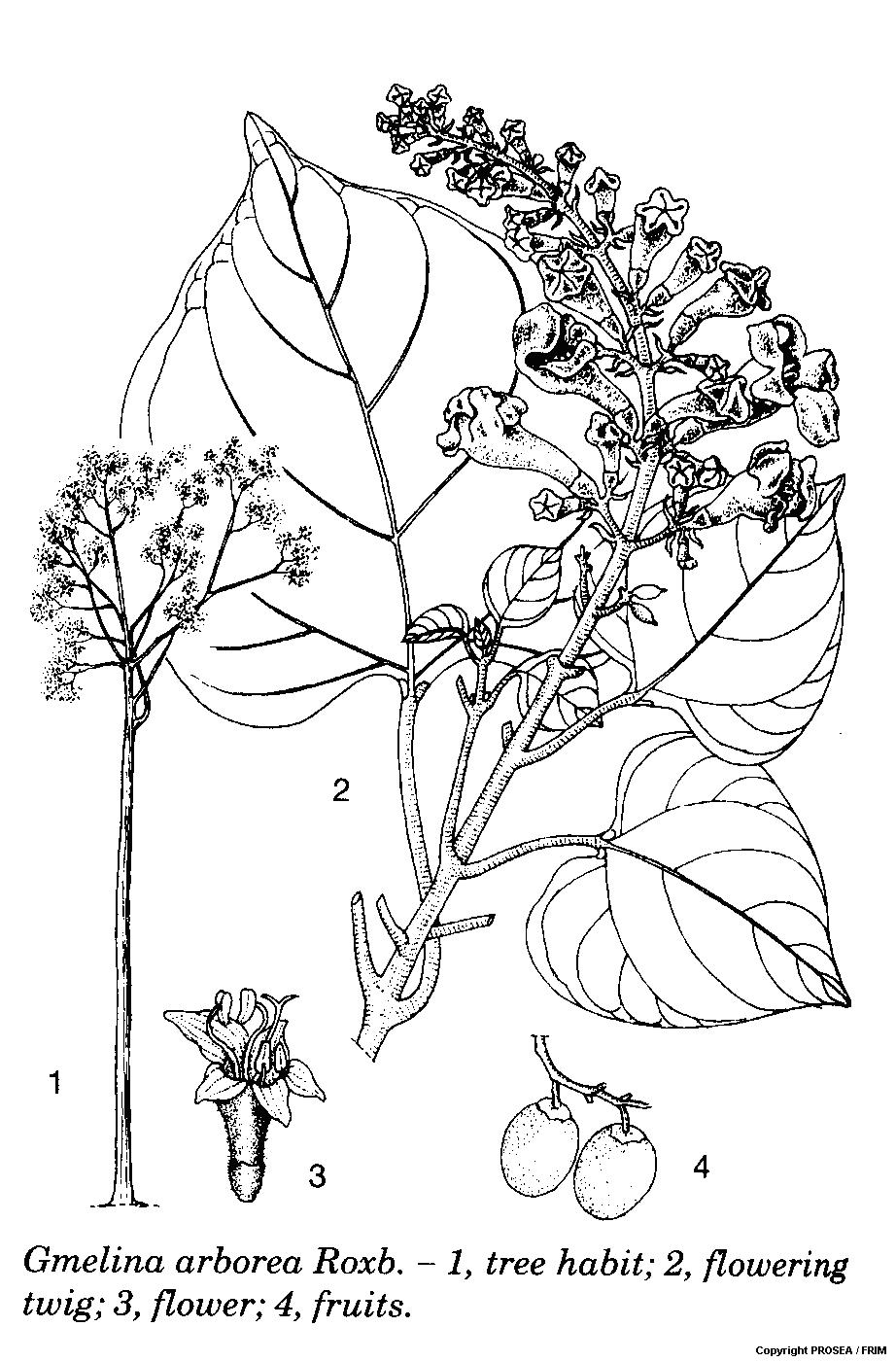Gmelina arborea Roxb.
Family
Verbenaceae
Synonyms
None
Vernacular Names
| Trade name | Yemane. |
Geographical Distributions
Gmelina arborea is native from south Pakistan to Sri Lanka and east to Burma and extensively planted in Southeast Asia, tropical Africa and Brazil.
Description
G. arborea is a medium-sized tree that can reach up to 30(-40) m tall. The bole is with average diametre of 50 cm but sometimes reaching up to 140 cm.
The leaves are usually more or less heart-shaped, measuring 10-25 cm x 5-18 cm and merely hairless or velvety beneath.
The petal is bright yellow while the ovary is hairless.
Ecology / Cultivation
G. arborea is rather common in its natural distribution area where it occurs in habitats varying from rainforest to drier deciduous forests. It reaches its maximum size in more humid forests of Burma, especially in the humid fertile valleys. It can grow up to 1300 m altitude but then usually stunted. It thrives in climates with mean annual temperature of 21-28°C while the mean maximum temperature of the hottest month between 24-35°C, and the mean minimum temperature of the coldest month between 18-24°C. In its natural range, the annual rainfall varies from 750-5000 mm. Its optimum lies at an annual rainfall of 1800-2300 mm in areas with a dry period of 3-5 months and a relative humidity of at least 40%.
Although G. arborea can be found on a variety of soils, it prefers deep moist soils with an ample supply of nutrients. When established under poor conditions, the trees suffer dieback after 15 years and also very sensitive to weed competition. The growth of G. arborea on leached acid soils is poor. In plantations, it requires a well-drained fertile soil. G. arborea is an opportunist species in the rainforest and has been classified as a long-lived pioneer. It has a high light requirement. The white beech is frequently found in primary or secondary, more open forests, along streams and on ridges. It often occurs in drier areas as compared to yemane and sometimes even in grasslands. It usually prefers a well-drained, moist soils and occurs from sea level to 1200 m altitude. It is a pioneer species, just like yemane, and may regenerate gregariously.
Line Drawing / Photograph
References
- Plant Resources of South-East Asia No. 5(1): Timber trees: Major commercial timbers.



